Welcome to the hundreds of new subscribers to Castles in the Sky!
Many of you are here because you read Do the weirdest thing that feels right. I am currently working on a book of the same title as well as a novel called Cathedral. This week, I’m doing the weirdest thing that feels right and commenting on a popular news story from the New Yorker, which is a first for me.
If you let it, AI will prompt you.
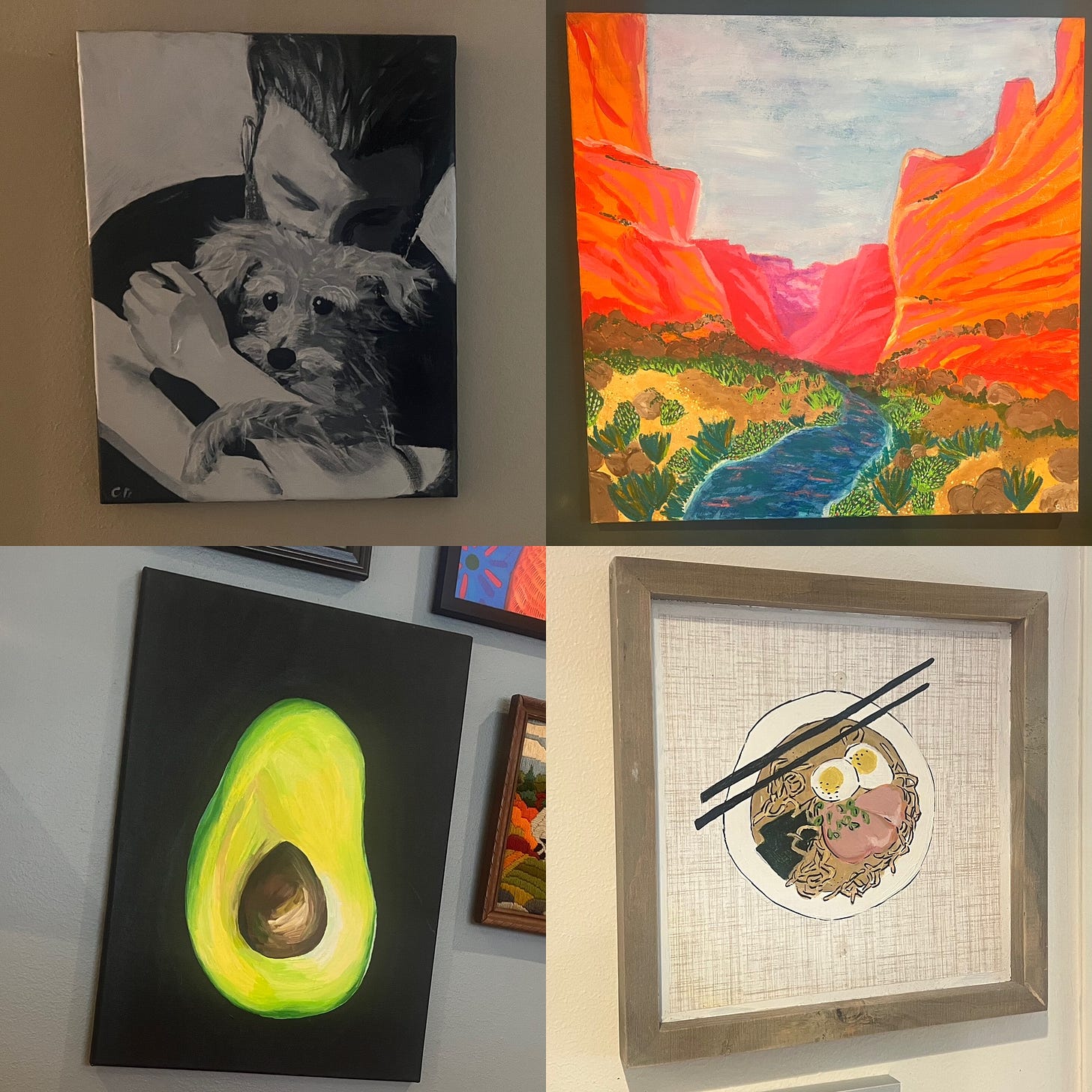
Around 2001, my computer genius uncle was trying to explain to fourteen-year-old me the future of the internet. He was bubbling over with enthusiasm for the technology.
I was fat and slow and closer to Bobby Hill than Lawrence Taylor, but in a bid to make the topic relevant to me, he said, "you want to be a linebacker, right? Well, one day, TV will be on the internet and there will be unlimited channels--you will be able to find a channel all about becoming a linebacker. TV and internet and phones will all be the same thing.”
The thought exploded my brain. “Unlimited channels, how? TV, internet, and phones are all so different–how will they be the same?”
I’ve never forgotten how many deep questions organically sprung from just the tiniest window into how technology was evolving. If you want to know how my fourteen-year-old brain felt, you should learn a little bit about artificial intelligence (AI). I am not going to try to convince you AI is the savior or the apocalypse or the best tool ever or useless. Rather, I want to demonstrate how engaging with the technology of AI, even if you’re not an expert, can make your life psychologically richer, and help you cultivate your own insights about art, creativity, and what makes us human.
To show you what I mean, I want to respond to a few excerpts from one recent essay in the New Yorker by fiction writer Ted Chiang called “Why A.I. Isn’t Going to Make Art,” and then share some conclusions I arrived at about the future of AI and art.
Chiang’s thesis is basically that creating art is a matter of making a multitude of small but important choices, and that “prompting” an AI (giving it a statement that it uses to generate text or pictures) is delegating those choices to a black box; since AI programs don’t have subjective experience or intentionality, an AI is not creating art. Before I explain why I agree and disagree with his thesis, I want to share a few excerpts.
This first passage compares the development of photography to the development of art:
When photography was first developed, I suspect it didn’t seem like an artistic medium because it wasn’t apparent that there were a lot of choices to be made; you just set up the camera and start the exposure. But over time people realized that there were a vast number of things you could do with cameras, and the artistry lies in the many choices that a photographer makes. It might not always be easy to articulate what the choices are, but when you compare an amateur’s photos to a professional’s, you can see the difference. So then the question becomes: Is there a similar opportunity to make a vast number of choices using a text-to-image generator? I think the answer is no. An artist—whether working digitally or with paint—implicitly makes far more decisions during the process of making a painting than would fit into a text prompt of a few hundred words.
I’ve read stuff by Chiang before and he is a craftsman: his writing is very precise. I would imagine he believes that being a skilled craftsman is an important part of being an artist. It reminds me that Anthony Bourdain once said that chefs are craftspeople, not artists. To Bourdain, the distinction between artist and craftsman was clear: plying your trade was not creating art and vice versa.
So who’s right? When someone practices their (non-artistic) craft exceedingly well, does it transcend craft into art? I am thinking of documentaries like Jiro Dreams of Sushi, about the world’s best sushi chef. He is a craftsman, but is his food art? Is the world’s best welder an artist? To say something is art, or you created it, how much work does it require from you?
In the second passage, Chiang raises a thought experiment about a college student potentially plagiarizing:
Consider a college student who turns in a paper that consists solely of a five-page quotation from a book, stating that this quotation conveys exactly what she wanted to say, better than she could say it herself. Even if the student is completely candid with the instructor about what she’s done, it’s not accurate to say that she is drawing inspiration from the book she’s citing. The fact that a large language model can reword the quotation enough that the source is unidentifiable doesn’t change the fundamental nature of what’s going on.
A non-obvious question that is raised here is, “Can art be created using inputs entirely made by other people?” As someone who grew up listening to hip-hop, I thought immediately of sampling, when a DJ cuts together pieces of other songs to make a new one. Sometimes the new songs are hardly recognizable, but sometimes they just add a drum to an existing melody. Is that art even though so many choices have been delegated and the DJ is using someone else’s work?
Obviously, a student plagiarizing is not creating anything. But what about a student curating quotes well for a paper? This leads the another question, “Is curation creation?” Clearly, there’s not much art from Chiang’s perspective when someone prompts an AI, but what about if I’m a bandleader or composer and I ask someone to, “play something funky to accompany this riff.” I’m basically prompting a guy, right?
As I read Chiang’s article, I knew just enough about AI that my thoughts were off to the races. Eventually, I realized that my own working definition of art is basically “inspiration + taste + craft.” Let’s say inspiration is a black box. I don’t know where the blend is: I know that many popular movies are masterfully crafted crap, but I’ve read some books where the ideas were so compelling I slogged through terrible writing for hundreds of pages. I don’t know which is more deserving of being called art.
But I know that I agree with Chiang in some ways. Consider someone going to Google Image search and typing in, “penguin riding a dinosaur.” If they find a picture that is exactly what they had in their mind’s eye, is that person an artist? What about if they typed in, “southern gothic novel about a woman killer” and found the exact book they had in mind? Are they an artist in either case? I don’t think so in either case. At the current version of AI interfaces, that’s where we are. After discussing director Bennet Miller using AI to create an art exhibit, Chiang explains why this is so:
OpenAI probably isn’t trying to build a product to serve users like Miller, because a product that requires a user to work for months to create an image isn’t appealing to a wide audience. The company wants to offer a product that generates images with little effort.
Currently, to generate a short story, you prompt an AI with a mere few sentences. This “less for more” paradigm is doing a lot of the heavy lifting of Chiang’s argument. This is where Chiang is the least like my uncle. My uncle was excited about the future, unrealized use of existing technologies. Whereas Chiang is extrapolating the current iteration of a technology way into the future.
I wondered how my uncle may have seen AI. Imagine you can compile notes, favorite songs, quotes, movie clips, and book excerpts, then dump years and years of that into a special box that cuts it down to a single movie. It is a “more for less” paradigm of creating art. Using the inspiration + taste + craft definition, as the prompter it is all inspiration and taste, no craft. Would that be art?
To be honest, I don’t have a good answer. But because I knew a little bit about AI before I read this article, I now have a richer understanding of art and authorship, as well as intelligence, consciousness, ownership, copyright, regulation, and a bunch of other things I thought about after considering this and other ideas about AI.
AI is a topic that’s been explored, dissected, and retreat a million times, and I’m not the first to write a commentary on Chiang’s ideas or to link creativity with AI to sampling or do anything else I’ve done. When it comes to the art of writing, the inspiration + taste + craft required for this essay, I haven’t done anything groundbreaking or technically compelling beyond a hundred think pieces you could find online. But, by going through the motions and writing it out, I was able to arrive at a conclusion I haven’t seen shared before.
And if you are particularly sharp, then you have probably noticed that my conclusion leaves something to be desired. I was not very specific in clarifying whether an AI cannot make art itself, or whether a person cannot use AI to make art. I did not make distinctions about who created something in a moral sense versus an ethical a legal one. I was also pretty vague about how the more-for-less AI might work, and how that is different from, for example, the Spotify or YouTube recommendation engine algorithm we currently have.
But if you have read anything I have written before, this may not have surprised you, because something I am always advocating for is “living the questions.” So you might say my inspiration is a bit different. With each new thing you come to know, the number of things you then know you don’t know increases exponentially. And so we must trade on accepting growing our ignorance to deepen our understanding and refine our beliefs.
You may have also realized that I did not address the central question that my definition of art demands: where does inspiration come from? And this is great because that is, in essence, the point of the essay. I don’t agree with Chiang, because I don’t think art is completely craft, but I do agree with Chiang because I don’t think an AI could ever be inspired. But I still don’t have a strong idea of what inspiration is or where it comes from, but now I know I’m ignorant of it, which means I’m in a much better position than before I read this article and thought about it. Getting a higher-resolution outline of the contours of our questions often yields understanding far beyond what we get from simple answers.
And that conclusion is the argument I wanted to make about AI. Learning a little about AI and following its development and the public debates on it is an unprecedented way to uncover your own worldview and refine your understanding of all kinds of things, like art, creativity, and what makes us human.
Note from Charlie: I’m so grateful and honored that there are over 1,600 of you here now, and 20 of you have elected to be paying contributors. I started writing two years ago because I had so many hopes, dreams, and ideas but was confronted every day with this online miasma of nihilistic confusion, intellectual loneliness, and existential boredom.
People seemed so rootless, ready to complain, disgusted, worried, and concerned that things were ugly and deteriorating. I saw all this too. I didn’t begrudge these people, but I saw that there was an element of will and selection. I started to entertain the idea of a sort of meta hope, a hope for hopefulness, and it just worked. And so I started writing to share this idea of hope and agency, then of the real vehicles for hope and agency: truth, beauty, and humor.
Castles in the Sky was born of this. To cultivate truth, beauty, and humor in daydreams and daily life. To build a little community as I got my legs on the internet and saw where this could take me. I have a much stronger idea now and soon, I will be changing the look and cadence of Castles in the Sky while also adding video and audio.
I want to share again how honored and grateful I am for all of your attention and for those of you who have decided to become paying contributors. Here’s to reading good books, living the questions, being a character, and doing the weirdest thing that feels right. Here’s to all the ways we can be curious, earnest, and bold.

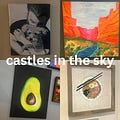

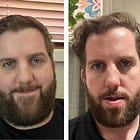
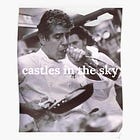
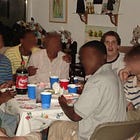
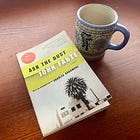
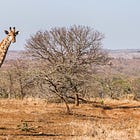

I liked this post. Humans have constantly defined and understood themselves via the medium of the technology they create. This is what cognitive science has done to the brain and mind. Prior to that we used an understanding of a pump to understand the physiology of the circulatory system. LLM will be no different. There are some areas that overlap with human cognition, even if the mechanisms are different, however there are quite a few ways that it is different.
Something you did not touch on which I believe is important is the value of art to the creator and the public. I believe that this value is independent of the form or medium used to create the art. You touched on this with your reference to photography. I think for there to be art there has to be in part a significant valuation by at a minimum the creator and perhaps also the public as well (although not required, and will likely vary from person-to-person. And key to that valuation with be the human centeredness in the creative process. Without that it, IMHO, it is not art, regardless of how breathtaking it is. A landscape, a sunset, or some other magnificent experience of nature are beautiful but not art. AI may make beautiful images just as nature creates beautiful things all the time but this is not art.
Congrats on the new subscribers!